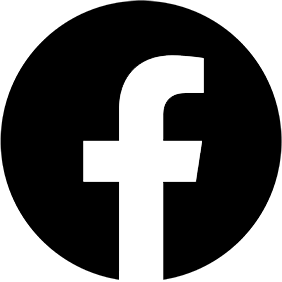
本期要闻 Highlights of the Month
江苏省:江苏省重点行业工业企业雨水排放环境管理办法(试行)
Jiangsu Province: Environmental Management Measures for Stormwater Discharge in Industrial Enterprises of Key Industries in Jiangsu Province (Trial)
当前,生态环境管理部门尚未出台专门针对工业企业雨水排放管理的相关规定,为细化落实现有水污染防治环保政策文件中有关条款,针对雨水排放提出精细化管理要求,江苏省印发了《江苏省重点行业工业企业雨水排放环境管理办法(试行)》,对化工、电镀、原料药制造、冶炼、印染等重点行业(或含相关工序)工业企业提出了管理要求。
办法明确要求重点行业企业必须收集初期雨水,收集的初期雨水应及时送至污水处理系统处理,严禁直接外排。
办法同时对后期雨水提出了精细化管理要求。要求做好后期雨水的收集、监控和排放,按照相关规范合理设置雨水排放口及配套标志标牌、安装视频监控或水质在线监控系统。针对雨水排放设施,办法要求企业定期开展雨水收集系统日常检查与维护,确保设施无堵塞、无渗漏、无破损,不发生污水与雨水管网错接、混接、乱接等现象。雨水排口应纳入环评及排污许可管理,雨水排水管网图应纳入企业环境信息公开管理内容。
Currently, Ministry of ecology and environment has not issued relevant regulations specifically for the storm water management. In order to implement the relevant provisions in the existing water pollution prevention and environmental protection policies, Jiangsu Province issued the “Environmental Management Measures for Stormwater Discharge in Industrial Enterprises of Key Industries in Jiangsu Province (Trial)”, raised storm water management requirements for industrial enterprises in key industries (or related processes) such as chemical industry, electroplating, raw material medicine manufacturing, smelting, printing and dyeing industries.
The Measures clearly requires that enterprises in key industries must collect initial storm water, which should be sent to the wastewater treatment system for treatment in a timely manner. Direct discharge without treatment is strictly prohibited.
Meanwhile, the Measures puts forward detailed requirements for storm water after initially collected. It requires enterprises in key industries to collect, monitor and discharge storm water properly, set up storm water discharge outlets, signs and labels in accordance with relevant regulations, and install video surveillance or online water quality monitoring systems. For storm water drainage system, the Measures requires enterprises to conduct routine inspection and maintenance of storm water collection systems to ensure that there is no blockage, leakage, or damage, and no wrongful, mixed, or messed connections with the pipe networks of wastewater. Storm water outlets should be incorporated into the environmental impact assessment and wastewater discharge permit management. The storm water drainage map should be incorporated into the environmental information disclosure management.
立法草案 Policy Initiatives & Developments
Department of Emergency Management: Safety Regulations for Operations in Confined Spaces (Consultation Paper)
征求意见稿修订了《工贸企业有限空间作业安全管理与监督暂行规定》(原国家安全监管总局令第59号)。
征求意见稿统计近十年工贸行业有限空间事故情况,配套编制《有限空间重点监管目录》,明确将各相关行业涉及的污水处理设施、炉窑、槽罐、纸浆池、腌制池等风险较高的设备设施纳入重点监管范围;将清理清淤、检维修作业,硫化氢和一氧化碳中毒风险防范以及禁止盲目施救等方面纳入《规定》重点要求。征求意见稿在企业基础管理方面,进一步强调有限空间风险识别、作业审批等基础管理要求,明确了企业监护人制、管理制度、发包管理、安全培训、警示标志、应急演练等方面要求,同时明确了作业现场安全管理措施的要求。
The consultation paper revised the “Interim Provisions on Administration and Supervision of Operational Safety in Confined Spaces at Industrial and Trading Enterprises” (formerly State Administration of Work Safety Order No. 59).
The consultation paper solicits opinions on the statistics of confined space accidents in industrial and trading industries in the past decade, and compiles a “Key Supervision Catalogue for Confined Space” to clearly incorporate high-risk equipment and facilities involved in various industries, such as wastewater treatment facilities, furnaces, tanks, pulp tanks, and pickling tanks, into the scope of key supervision; The Regulations incorporates cleaning and dredging, maintenance and repair operations, risk prevention of hydrogen sulfide and carbon monoxide poisoning, and prohibition of blind rescue into the key requirements of the Regulations.
The consultation paper further emphasizes basic management requirements such as confined space risk identification and operation approval in terms of enterprise basic management. It clarifies requirements for enterprise guardianship system, management system, contract management, safety training, warning signs, emergency drills, and other aspects. At the same time, it clarifies the requirements for on-site safety management measures.
Ministry of Ecology and Environment: Technical Specification for Nomenclature of Chemicals for Environmental (Consultation Paper)
标准规定了环境管理领域化学物质的命名要求。
本标准适用于环境管理中化学物质的命名,包括新化学物质环境管理登记、《中国现有化学物质名录》管理、化学物质环境风险评估和管控等。引用《新化学物质申报类名编制导则》(HJ/T 420)与《中国现有化学物质名录》给出了化学物质、新化学物质、成分、单成分物质、多成分物质和不明复杂物质等 6 个术语和定义,为相关行业企业开展环境管理领域化学物质命名提供指导。
The standard specifies the nomenclature requirements for chemical substances in the field of environmental management.
This standard applies to the nomenclature of chemical substances in environmental management, including the environmental management registration of new chemical substances, the management of the “Inventory of Existing Chemical Substances in China”, environmental risk assessment and control of chemical substances, etc. The standard quotes the “Guidelines for the Generic Name of New Chemical Substances” (HJ/T 420) and the “Inventory of Existing Chemical Substances in China” to give 6 terms and definitions, including chemical substances, new chemical substances, ingredients, single-component substances, multi-component substances and unknown complex substances, and provide guidance for enterprises to carry out the naming of chemical substances in the field of environmental management.
最新国家标准New National Standards
GB 19517-2023 National Safety Technical Code for Electric Equipment
GB/T 36507-2023工业车辆 使用、操作与维护安全规范
GB/T 36507-2023 Industrial Trucks——Safety Rules for the Application, Operation and Maintenance
TSG 51-2023 Lifting Appliances Safety Technical Regulation
最新地方性法规 Regional Updates
Jiangsu Province: Promotion Plan for Separate Treatment of Industrial Wastewater and Domestic Sewage in Jiangsu Province
为加快推进江苏省工业废水与生活污水分类收集分质处理,提升城镇污水处理厂处理效能和安全稳定运行保障水平,降低工业有毒有害污染物稀释排放风险,制定该方案。方案规定新建冶金、电镀、化工、印染、原料药制造(有工业废水处理资质且出水达到国家标准的原料药制造企业除外)等工业企业排放含重金属、难生化降解废水、高盐废水的,不得排入城镇污水集中收集处理设施。
现有纳管企业按照可生化优先原则、纳管浓度达标、总量达标双控原则、工业废水限量纳管等七项原则开展评估,分为允许接入、整改后接入、限期退出三种类型,分类整治。2023年8月底前,各级主管部门按照《江苏省城镇污水处理厂纳管工业废水分质处理评估技术指南(试行)》(附件1)要求,完成对县级以上城镇污水处理厂和纳管工业企业的综合调查评估。明确工业企业允许接入清单、整改后可接入清单、限期退出清单,以及城镇污水处理厂改造清单、工业废水集中(预)处理设施建设清单等“五个清单”。
The plan was formulated to accelerate the classified collection and treatment of industrial wastewater and domestic sewage in Jiangsu Province, to improve the treatment efficiency and the capability of ensuring safe and stable operation of domestic sewage treatment plants, and reduce the risk of dilution and discharge of industrial toxic and harmful pollutants.
The plan stipulates that new industrial enterprises in metallurgy, electroplating, chemicals, printing and dyeing, and raw material pharmaceutical manufacturing industries(except for raw material pharmaceutical manufacturing enterprises with industrial wastewater treatment qualifications, whose effluents meet the national standards) that discharge wastewater containing heavy metals, refractory biodegradable wastewater, and high-salt wastewater shall not discharge the wastewater into centralized domestic sewage collection and treatment facilities.
Existing enterprises included in the assessment will be evaluated in accordance with seven principles, including the principle of biochemical priority, the principle of reaching the standard of concentration incorporated in the management, the principle of reaching the standard of dual control of the total amount, and the principle of limited incorporation into management of industrial wastewater. Enterprises will be divided into three categories, i.e. permitted discharge, discharge after rectification, and withdrawal within a time limit, where classified rectification will be imposed. Before the end of August 2023, the competent departments shall complete the comprehensive investigation and evaluation of domestic sewage treatment plants and industrial enterprises incorporated into management at or above the county level in accordance with the requirements of the “Technical Guidelines for the Quality Evaluation of Industrial Wastewater Treatment in Domestic Sewage Treatment Plants and Industrial Enterprises Incorporated Into Management in Jiangsu Province (Trial)” (Annex 1). The Guidelines Clarifies the “five lists “of industrial enterprises, including the list of allowed discharge, the list of allowed discharge after rectification, the list of withdrawal within a time limit, the list of renovation of domestic sewage treatment plants, and the list of construction of industrial wastewater centralized pretreatment/treatment facilities.
辽宁省:辽宁省危险废物“点对点”定向利用豁免管理工作实施方案(试行)
Liaoning Province: Implementation Plan for Exemption Management of “Point to Point” Targeted Utilization of Hazardous Waste in Liaoning Province (Trial)
2021年5月,国务院办公厅《关于印发强化危险废物监管和利用处置能力改革实施方案的通知》发布,在规范危险废物利用内容中再次提出在环境风险可控的前提下,探索危险废物“点对点”定向利用许可证豁免管理。为细化开展危险废物“点对点”定向利用的申请条件,规范豁免管理工作程序,目前已有包含上海市、江苏省在内的十余省市出台地方“点对点”利用实施方案。
辽宁省实施方案明确了开展危险废物“点对点”定向利用应具备的条件,符合条件的单位可以通过相应的豁免实施程序进行首次申请及延续、变更申请和取消豁免申请。
In May 2021, the General Office of the State Council issued a notice on issuing the “Implementation Plan for Strengthening the Supervision, Utilization and Disposal of Hazardous Waste,” which once again proposed to explore the exemption management of “point-to-point” targeted utilization permits for hazardous waste under the premise of controllable environmental risks in regulating the content of hazardous waste utilization. In order to refine the application conditions for the “point-to-point” targeted utilization of hazardous waste and standardize the exemption management procedures, more than ten provinces and cities, including Shanghai and Jiangsu Province, have introduced local “point-to-point” utilization implementation plans.
The implementation plan of Liaoning Province specifies the necessary conditions for conducting “point-to-point” targeted utilization of hazardous waste. Units that meet the conditions can apply for the initial application, extension and alternation application and cancellation of application through corresponding exemption implementation procedures.
上海市:关于优化建设项目新增主要污染物排放总量管理推动高质量发展的实施意见
Shanghai: Implementation Opinion on Optimizing the Total Discharge Management of Major New Pollutants in Construction Projects to Promote High-Quality Development
意见将编制环境影响报告书(表)的建设项目且涉及排放主要污染物的,全部纳入建设项目主要污染物总量控制范围;将SO2、NOx、VOCs、颗粒物4个废气污染物,COD、NH3-N 、总氮(TN)和总磷(TP)4个废水污染物以及铅、汞、镉、铬、砷5个重点重金属污染物纳入总量控制范围。意见调整了建设项目新增总量的削减替代实施范围,聚焦行业排放特征和影响本市环境质量的制约因子,分类施策;对不同行业、不同污染物提出差异化的新增总量削减替代比例要求,根据环境质量达标状况动态确定新增总量的削减替代比例。
The Opinion incorporate all construction projects that needs to compile the environmental impact report (form) and projects that discharge pollutants falling into the scope of the mass loading quota control of major pollutants of the construction projects; 4 air emission pollutants of SO2, NOx, VOCs and particles, the 4 wastewater pollutants of COD and NH3 -N, total nitrogen (TN) and total phosphorus (TP) and 5 key heavy metal pollutants of lead, mercury, cadmium, chromium and arsenic are included in the scope of mass loading quota control.
The Opinion adjusts the implementation scope of the reduction and replacement of the increased total amount of construction projects, focuses on the characteristics of industry emissions and the constraints affecting the city’s environmental quality, and implements classified policies; The Opinion also proposes differentiated increased total reduction and replacement ratios for different industries and different pollutants requirements, according to the status of environmental quality standards to dynamically determine the replacement ratio of the increased total amount reduction.
Shanghai: Implementation Plan for Further Promoting the Exemption and Utilization of Hazardous Wastes in Shanghai Municipality
方案按照《国家危险废物名录(2021年版)》附录《危险废物豁免管理清单》要求,在环境风险可控的前提下,将上海市内产废单位产生的一种危险废物,直接作为另一家利用单位环境治理或工业生产的替代原料利用,利用单位豁免持有危险废物经营许可证。根据《豁免清单》,将其第1项至31项归为非定向利用类型,将其第32项归为“点对点”定向利用类型。方案明确了上海市危险废物豁免管理条件(合规性要求、利用要求、产能和污染防治要求、分类豁免要求)以及申请实施程序(申请、备案、排污许可衔接、变更、延续、重新申请、终止)。附件中提供了危险废物豁免利用方案编制指南。According to the requirements of the “Directory of Hazardous Waste Exemption Management”(Appendix of “Directory of National Hazardous Wastes (2021 Version)” ), where the environmental risk is controllable, once a kind of hazardous waste produced by waste production units in Shanghai could be directly used by another utilization unit as the alternative raw materials for environmental governance or industrial production, the utilization unit is exempted from holding a hazardous waste operation certificate.. According to the “Exemption List”, items 1 to 31 are classified as non-directed utilization types, and item 32 is classified as “point-to-point” directional utilization type.
The Plan clarifies the conditions for exemption management of hazardous waste in Shanghai (compliance requirements, utilization requirements, production capacity and pollution prevention and control requirements, classification exemption requirements) and application procedures (application, filing, transition from pollutant discharge permits, alteration, extension, re-applications, termination). The Appendix provides guidelines for the compilation of plans for the utilization of exemptions for hazardous waste.
Shanghai: Declaration, Registration and Marking Management Measures for Non- Road Mobile Machinery in Shanghai Municipality
本办法是对2021版办法的修订。使用汽油发动机和新能源(包括以纯电动、混合动力、天然气、液化石油气等为动力)的非道路移动机械,其所有者应向机械使用地区属地管理部门申报机械的种类、数量、使用场所等信息,并申领识别标志,将其固定于机械显著位置。已在公安机关交通管理部门登记,并取得机动车登记证书、号牌、行驶证可上道路行驶的移动机械和可运输工业设备,不在本办法管理范围内。
The Measures is a revision of the 2021 version. Owners of non-road mobile machinery using gasoline engines and new energy sources (including pure electric power, hybrid power, natural gas, liquefied petroleum gas, etc.) shall report the type, quantity, and location of use to the local management department of the region where machinery is used, apply for the identification mark, and fix it in a prominent position on the machinery.
Mobile machinery and transportable industrial equipment that have been registered in the traffic management department of the public security organization and have obtained motor vehicle registration certificates, license plates, and driving permits for road use are not within the management scope of this regulation.
本法规月刊是由伊尔姆环境资源管理咨询(上海)有限公司(ERM)、Nimonik 安纬同(上海)管理咨询有限公司(Nimonik)与大成律师事务所上海分所(Dentons Shanghai)联合制作。我们在确保其内容准确无误的同时,不对其任何可能的错误或疏忽承担责任。本刊中的内容不可作为法律依据,亦不可视为对个案的释义。因参考本刊物内容导致的任何损失,ERM, Nimonik 与大成律师事务所将不承担任何责任。如需寻求专业意见,请咨询有关专业顾问。
This newsletter is prepared for clients and professional associates by ERM, Nimonik and Dentons Shanghai. Whilst every effort has been made to ensure accuracy, no responsibility can be accepted for errors and omissions, however caused. The information contained in this newsletter should not be relied on as legal advice and should not be regarded as a substitute for detailed advice in individual cases. No responsibility for any loss occasioned to any person acting or refraining from action as a result of material in this newsletter is accepted by ERM, Nimonik or Dentons Shanghai. If advice concerning individual problems or other expert assistance is required, the services of a competent professional adviser should be sought.






 沪公网安备31010602007801
沪公网安备31010602007801